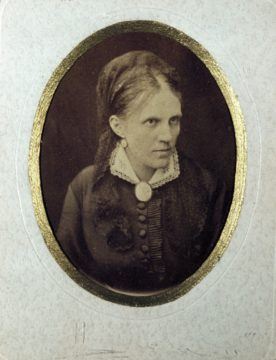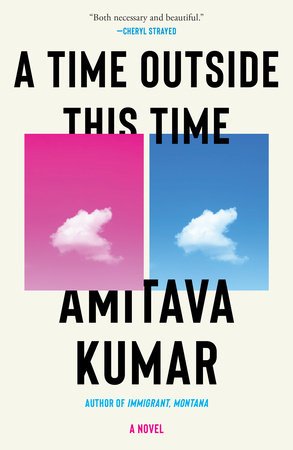Samira Shackle in Literary Hub:
 I moved to Karachi in the aftermath of riots, arriving to smashed shop windows and the smell of burning tires. It was 2012 and the city had been engulfed by protests against a YouTube video that made offensive statements about the Prophet Muhammad. The city’s few remaining cinemas had been attacked, and churches had taken extra security precautions, lest the mob hold Pakistan’s Christians accountable for the crimes of the American filmmakers. The scale of destruction was disproportionate to the offence itself. I was a Londoner moving to my mother’s hometown, a place I had visited only once since childhood. This was an immediate introduction to the discontent that bubbled beneath the surface of the city, always ready to erupt into violence.
I moved to Karachi in the aftermath of riots, arriving to smashed shop windows and the smell of burning tires. It was 2012 and the city had been engulfed by protests against a YouTube video that made offensive statements about the Prophet Muhammad. The city’s few remaining cinemas had been attacked, and churches had taken extra security precautions, lest the mob hold Pakistan’s Christians accountable for the crimes of the American filmmakers. The scale of destruction was disproportionate to the offence itself. I was a Londoner moving to my mother’s hometown, a place I had visited only once since childhood. This was an immediate introduction to the discontent that bubbled beneath the surface of the city, always ready to erupt into violence.
I walked out of the airport into a heavy, humid night and was collected by my aunt, my mother’s cousin, with whom I planned to stay. We got into the back of the car; up front was the driver. (This felt unnatural to me to begin with, although I knew that it was common for well-off families in Pakistan to employ a full-time driver; many companies do the same for their office staff.) Karachi is a web of flyovers and highways, the sides of the roads dotted with battered colonial facades, concrete monstrosities, improvised shacks and half-built shells of buildings. Ornate plasterwork sits below poorly constructed high-rises designed only to maximize the space.
More here.

 Cryptocurrencies have emerged as one of the most captivating, yet head-scratching, investments in the world. They soar in value. They crash. They’ll change the world, their fans claim, by displacing traditional currencies like the dollar, rupee or ruble. They’re named after
Cryptocurrencies have emerged as one of the most captivating, yet head-scratching, investments in the world. They soar in value. They crash. They’ll change the world, their fans claim, by displacing traditional currencies like the dollar, rupee or ruble. They’re named after  Purple morning glories creep and sprawl against a white fence, embracing a sculpture of sorts, wooden arms akimbo; a blue plastic bin flipped over. One can almost hear the crunch of the photographer’s foot against the dried grass. The photographs of Sue Palmer Stone exist somewhere between the extremes of exuberance and decay, fragility and strength, loss and playfulness.
Purple morning glories creep and sprawl against a white fence, embracing a sculpture of sorts, wooden arms akimbo; a blue plastic bin flipped over. One can almost hear the crunch of the photographer’s foot against the dried grass. The photographs of Sue Palmer Stone exist somewhere between the extremes of exuberance and decay, fragility and strength, loss and playfulness. Before
Before  Thomas Meaney in the LRB (Photo by
Thomas Meaney in the LRB (Photo by  Wolfgang Streeck in Sidecar (Photo by
Wolfgang Streeck in Sidecar (Photo by  Faisal Devji in Boston Review:
Faisal Devji in Boston Review: In those diaries, Mann frankly discussed his sexual interest in men, an interest that remained coded in his fiction. In “The Magician,” a subtle and substantial new novel about Mann’s life, Colm Toibin writes that, were Goebbels to get his hands on the diaries, he would Oscar Wilde the eminent author, transforming “the reputation of Thomas Mann from great German writer to a name that was a byword for scandal.”
In those diaries, Mann frankly discussed his sexual interest in men, an interest that remained coded in his fiction. In “The Magician,” a subtle and substantial new novel about Mann’s life, Colm Toibin writes that, were Goebbels to get his hands on the diaries, he would Oscar Wilde the eminent author, transforming “the reputation of Thomas Mann from great German writer to a name that was a byword for scandal.” The message Martha is actually sending, the reason large numbers of American women count watching her a comforting and obscurely inspirational experience, seems not very well understood. There has been a flurry of academic work done on the cultural meaning of her success (in the summer of 1998, the New York Times reported that “about two dozen scholars across the United States and Canada” were producing such studies as “A Look at Linen Closets: Liminality, Structure and Anti-Structure in Martha Stewart Living” and locating “the fear of transgression” in the magazine’s “recurrent images of fences, hedges and garden walls”), but there remains, both in the bond she makes and in the outrage she provokes, something unaddressed, something pitched, like a dog whistle, too high for traditional textual analysis. The outrage, which reaches sometimes startling levels, centers on the misconception that she has somehow tricked her admirers into not noticing the ambition that brought her to their attention. To her critics, she seems to represent a fraud to be exposed, a wrong to be righted. “She’s a shark,” one declares in Salon. “However much she’s got, Martha wants more. And she wants it her way and in her world, not in the balls-out boys’ club realms of real estate or technology, but in the delicate land of doily hearts and wedding cakes.”
The message Martha is actually sending, the reason large numbers of American women count watching her a comforting and obscurely inspirational experience, seems not very well understood. There has been a flurry of academic work done on the cultural meaning of her success (in the summer of 1998, the New York Times reported that “about two dozen scholars across the United States and Canada” were producing such studies as “A Look at Linen Closets: Liminality, Structure and Anti-Structure in Martha Stewart Living” and locating “the fear of transgression” in the magazine’s “recurrent images of fences, hedges and garden walls”), but there remains, both in the bond she makes and in the outrage she provokes, something unaddressed, something pitched, like a dog whistle, too high for traditional textual analysis. The outrage, which reaches sometimes startling levels, centers on the misconception that she has somehow tricked her admirers into not noticing the ambition that brought her to their attention. To her critics, she seems to represent a fraud to be exposed, a wrong to be righted. “She’s a shark,” one declares in Salon. “However much she’s got, Martha wants more. And she wants it her way and in her world, not in the balls-out boys’ club realms of real estate or technology, but in the delicate land of doily hearts and wedding cakes.” Vaccines don’t last forever. This is by design: Like many of the microbes they mimic, the contents of the shots stick around only as long as it takes the body to eliminate them, a tenure on the order of
Vaccines don’t last forever. This is by design: Like many of the microbes they mimic, the contents of the shots stick around only as long as it takes the body to eliminate them, a tenure on the order of  In the spring of 1880, in the midst of what felt like a political tipping point, a new monument dedicated to the Russian poet Alexander Pushkin was unveiled in Moscow. Alexander II’s Great Reforms of the 1860s — including the emancipation of the serfs — had not satisfied the appetites of radicals for change. Most alarming to moderate Russians were the women who had begun joining the ranks of the self-described Nihilists. They smoked cigarettes, cut their hair short, preferred Feuerbach to romance novels and spurned marriage in favor of careers in science and medicine (or, occasionally, terrorism).
In the spring of 1880, in the midst of what felt like a political tipping point, a new monument dedicated to the Russian poet Alexander Pushkin was unveiled in Moscow. Alexander II’s Great Reforms of the 1860s — including the emancipation of the serfs — had not satisfied the appetites of radicals for change. Most alarming to moderate Russians were the women who had begun joining the ranks of the self-described Nihilists. They smoked cigarettes, cut their hair short, preferred Feuerbach to romance novels and spurned marriage in favor of careers in science and medicine (or, occasionally, terrorism). Amitava Kumar tends to talk about his forthcoming novel,
Amitava Kumar tends to talk about his forthcoming novel,  While the explosion in food allergies is well documented, there is no agreement on why it’s happened. Theories abound: one of the most enduring has been the so-called “hygiene hypothesis,” put forward by the epidemiologist David Strachan in 1989, which suggested that modern society’s obsession with cleanliness was at the root of the problem. The hypothesis proposed that a lack of exposure to dirt and bugs leads to a badly calibrated immune system prone to misfires. But though the idea feels intuitive, and has thus found a willing public audience, evidence for it has been lacking. Scientists now say that over-enthusiastic hygiene practices are unlikely to be the cause, although exposure to the lungs of particular cleaning products might be.
While the explosion in food allergies is well documented, there is no agreement on why it’s happened. Theories abound: one of the most enduring has been the so-called “hygiene hypothesis,” put forward by the epidemiologist David Strachan in 1989, which suggested that modern society’s obsession with cleanliness was at the root of the problem. The hypothesis proposed that a lack of exposure to dirt and bugs leads to a badly calibrated immune system prone to misfires. But though the idea feels intuitive, and has thus found a willing public audience, evidence for it has been lacking. Scientists now say that over-enthusiastic hygiene practices are unlikely to be the cause, although exposure to the lungs of particular cleaning products might be.